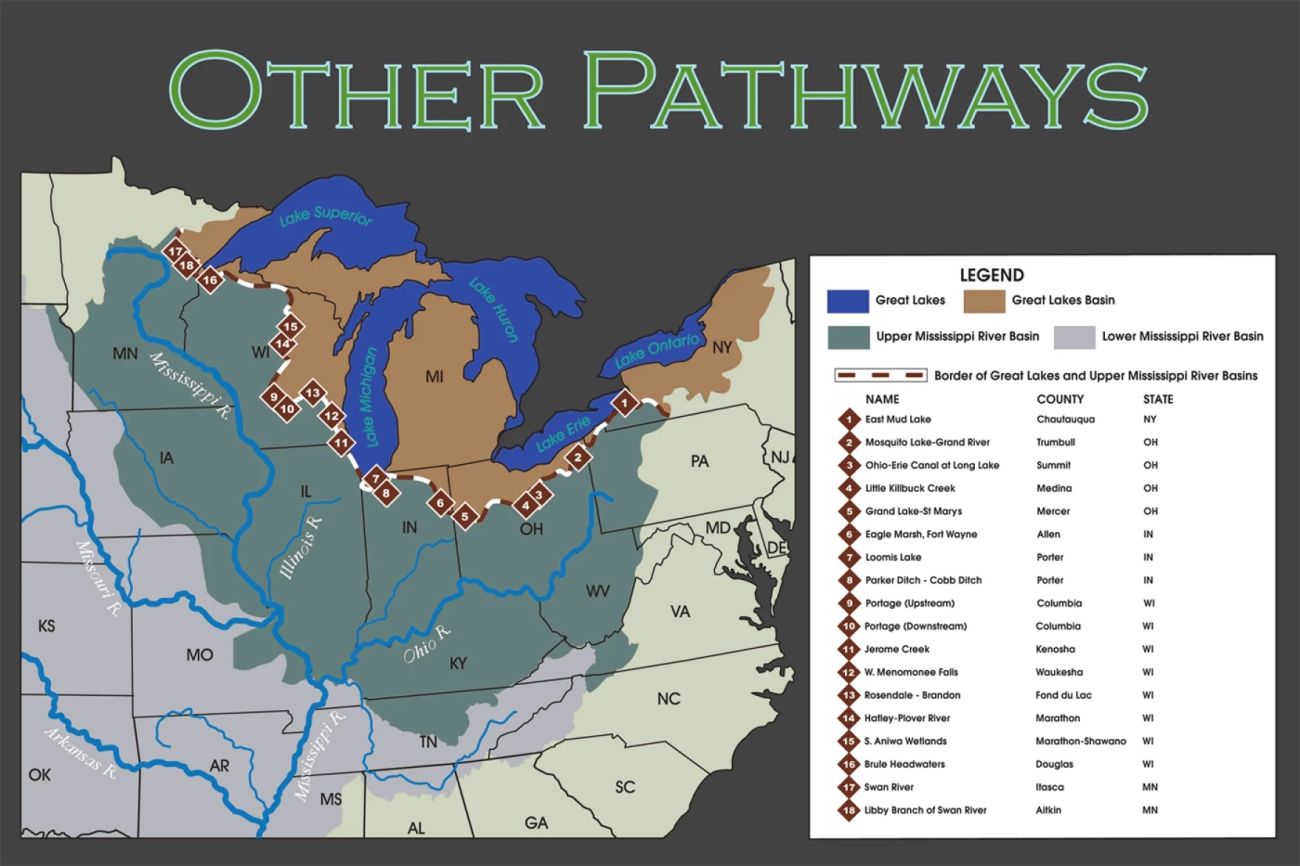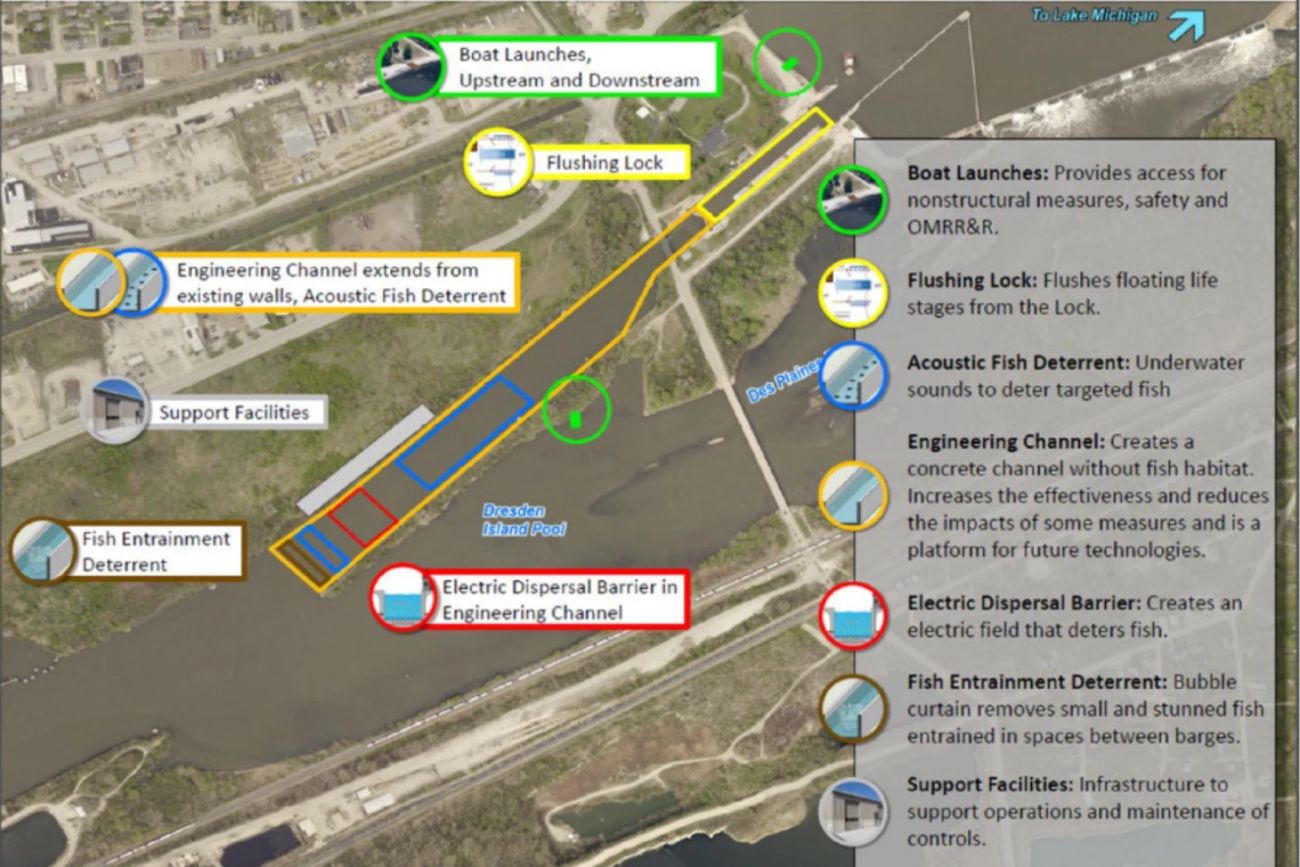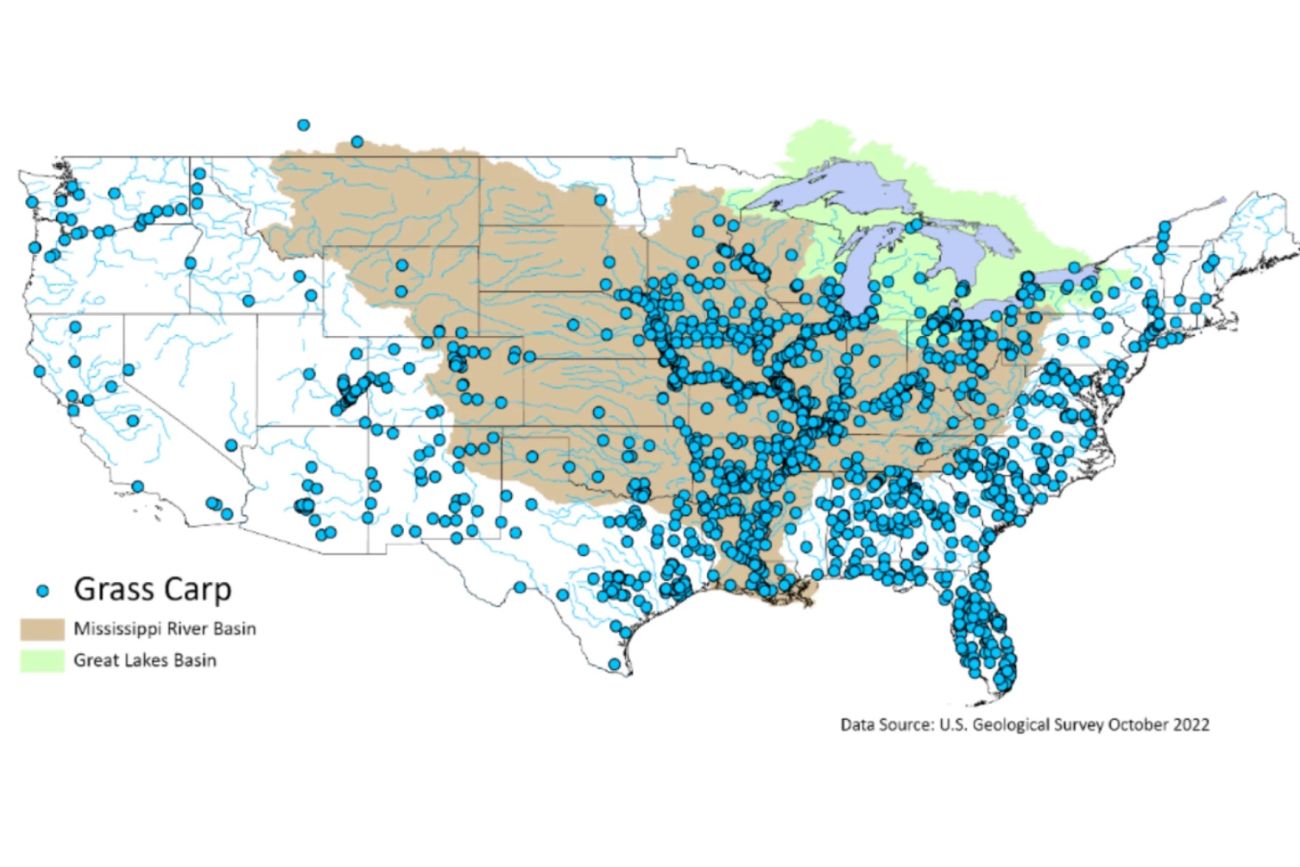Nearly $1.2 billion spent at one site to deter invasive carp from Great Lakes; other entry sites still possible

A coalition of organizations is developing an innovative and expensive engineering project at the 96-year-old Brandon Road Lock and Dam on the Des Plaines River south of Chicago to block invasive carp from reaching Lake Michigan.
The $1.146 billion project, paid for with 90 percent federal and 10 percent state funds from Illinois and Michigan, is meant to help prevent catastrophic damage to the $7 billion Great Lakes fishery, and untold disruption to the $15 billion boating industry, according to authorities.

But addressing the need for a better barrier at the Brandon Road Lock and Dam could fix just one potential carp entry point.
Related:
- Will Michigan’s largest water provider target tiny city for next shutoffs?
- Nessel: $10B PFAS settlement with 3M doesn’t resolve Michigan’s claims
- Can climate migrants offset Michigan’s population woes? Maybe, experts say
There are at least 18 other connections between the Mississippi River basin and the Great Lakes for aquatic invasive species to get in that were identified by the Great Lakes and Mississippi River Interbasin Study.
The study assessed pathways and gave a level of risk to each of them in 2013. Since then, connections such as Eagle Marsh in Fort Wayne, Indiana, and Ohio-Erie Canal at Long Lake were closed with barriers.
This article is part of The Great Lakes News Collaborative, which includes Bridge Michigan, Circle of Blue, Great Lakes Now at Detroit Public Television, and Michigan Radio. It unites newsroom resources to report on the most pressing threats to the Great Lakes and drinking water supplies, including pollution, climate change, and aging infrastructure. The independent journalism is supported by the Charles Stewart Mott Foundation.
Engineers are adding new impediments to the electrical barriers now in place at the Brandon Lock to block fish that can grow to four feet and 100 pounds. But the existing barriers are only effective on fish that are six inches or bigger, said Scott Whitney, chief of project management at the US Army Corps of Engineers.
The new barrier will use sound, electricity, a first-of-its-kind locking mechanism to flush lifeforms out of the river, and a “bubble curtain” – a wall of bubbles – to block carp.
The intent is to prevent damage to Pacific salmon, lake trout, walleye and whitefish fisheries that are among the most lucrative sectors of the Great Lakes recreational economy.
“We’ve shown in the laboratory that bubble barriers can be very effective in keeping fish from moving through them,” said Whitney.
Additionally, silver carp “have a very unique connection between the inner ear and their swim bladder, that creates an echo chamber and that echo chamber reacts to a negative noise. That’s why they jump in the air and hit people in boats.”
The risk of ruining Great Lakes fisheries has its genesis in human ingenuity that turned out to be anything but genius. The four species of invasive carp – bighead carp, silver carp, black carp, and grass carp – that could ruin Great Lakes fisheries were imported to the United States in the 1970s as a method to control nuisance algal blooms in wastewater treatment plants and aquaculture ponds where catfish were raised. The invasive fish grow quickly and are capable of outcompeting other fish for food, according to the Great Lakes Fishery Commission.
The second mistake was made 70 years earlier when engineers spent $30 million ($1 billion in current dollars) to reverse the flow of the Chicago River. Instead of emptying into Lake Michigan, Chicago’s sewerage and waterborne filth -sometimes with floating carcasses of dead livestock- were directed to the Mississippi River basin.
The reverse flow opened a connection between the Mississippi River basin and the Great Lakes, establishing a backdoor for invasive species, including carp.
The extensive watershed of the Mississippi River system covers much of the center of the country. It provided a perfect feast for the voracious carp to expand their range and their numbers. Female carp are capable of producing up to 1 million eggs per year.

“They all grow quickly to large sizes, which kind of precludes them from predation at a relatively young age,” said Peter Alsip, an ecological modeling data analyst for the University of Michigan’s Cooperative Institute for Great Lakes Research.
He has firsthand experience with the silver carp leaping out of the water because of boat motor sounds. “We were working at night. You could hear them jumping around us, but you couldn’t see. And then one just popped out of nowhere and jumped right at me.” He added, “I’ve been hit once in the back.”
“Look at what happened in the Illinois River and certain stretches of the Des Plaines River,” said Marc Smith, policy director at the National Wildlife Federation. “They’ve pushed out the native fish species. And in some stretches of the river, they have a 90% biomass in those rivers.”
“I’ve heard stories of where they’ll swim out of the water and eat grass that’s along the shoreline,” added John Navarro, a program administrator at the Ohio Department of Natural Resources.
Grass carp are already swimming in Lake Erie. In Ohio, the Department of Natural Resources is fishing grass carp out and collecting eggs, said Navarro.
The main spawning point for them is the Sandusky River with 167 grass carp in 2020, according to a study by the University of Toledo.
To eradicate grass carp in Lake Erie, the Department of Natural Resources proposed a behavioral barrier with a bubble barrier and acoustic deterrents in the Sandusky River.
The Ohio DNR’s strategy is working so far. “We’re not seeing impacts now,” Navarro said.
The Brandon Road project in Illinois is in the last stage of design. In addition to the bubbles and sound barriers, the project will have an automated barge-clearing deterrent.
“It’s creating this turbulence in the middle of the barge, that forces material out to the sides, and lots of current takes it away,” said Whitney. “So any eggs, any detritus, any material that can carry floating life forms or life forms attached to another material are pushed out before it gets into the chamber.”
After that, the flushing lock forces any water that’s in there, down and out of the chamber before the barge comes in.
“When you’re doing a kitchen remodel in your house, you need to have the architectural designs done first, before you start coming in and demoing (demolishing) and putting in new cabinets. So that design has to be done first. And we’re almost done with that,” said Smith.
The next step is signing a product agreement between the Corps of Engineers and the
State of Illinois to start construction, which would take six to seven years.
“One of the last remaining hiccups in finalizing this project is ensuring access to the parcel of property adjacent to the lock. The State of Illinois is responsible for engineers having access to this part of the property to help in the construction,” Smith said.
According to Ashtracker, a website of the Environmental Integrity Project, one of the sites, an electrical generating station, is contaminated with cobalt, manganese, sulfate,
antimony, nickel, cadmium, and lead because coal ash was stored there.
“This property – owned by Midwest Generation (NRG, formerly Edison's Midwest Generation) – is more than likely contaminated with various substances. However, it is our hope that the US Army Corps of Engineers and the State of Illinois can find a solution to this and advance this project across the finish line. Invasive carp continue to swim towards the Great Lakes and we can’t afford further delay,” Smith said.
Michigan Environment Watch
Michigan Environment Watch examines how public policy, industry, and other factors interact with the state’s trove of natural resources.
- See full coverage
- Subscribe
- Share tips and questions with Bridge environment reporter Kelly House
Michigan Environment Watch is made possible by generous financial support from:
Our generous Environment Watch underwriters encourage Bridge Michigan readers to also support civic journalism by becoming Bridge members. Please consider joining today.
See what new members are saying about why they donated to Bridge Michigan:
- “In order for this information to be accurate and unbiased it must be underwritten by its readers, not by special interests.” - Larry S.
- “Not many other media sources report on the topics Bridge does.” - Susan B.
- “Your journalism is outstanding and rare these days.” - Mark S.
If you want to ensure the future of nonpartisan, nonprofit Michigan journalism, please become a member today. You, too, will be asked why you donated and maybe we'll feature your quote next time!






